How Do I Get Shocked? Why Am I Getting Shocked? It's Simple.
For Most of us Electricians, we understand WHAT a shock feels like! It hurts (pun definitely intended. Hertz/Hurts. Get it??). But how and why do we get shocked. In the latest episode of Electrician U, Dustin answers this question.
🤘⚡️MEMBERSHIP⚡️🤘
JOIN ELECTRICIAN U - become a member and get:
FREE Continuing Education every year
FREE Practice Exams
FREE Monthly Video Courses
FREE Weekly Live Instructor-Led Classes
FREE Monthly Educational Newsletter
Premium Members-Only Content
Private Discord Channel
Monthly Members-Only Discord Chats
Sign up here --- https://www.electricianu.com/electrician-u-membership/
🎧🎹MUSIC AND VIDEO:🎹🎧
https://www.facebook.com/descantmv
🎬✍️ART AND ILLUSTRATION:✍️🎬
https://www.daverussoart.com
Let’s first define a few things. An Electric Shock is “A sudden discharge of electricity through a part of the body”. This would be the standard buzzing shock most of us electricians have experienced at least a few (hundred) times over our careers! Electrocution on the other hand is defined as “Death or Severe Injury caused by electric shock from electric currents passing through the body”. So, electrocution is much more severe, and is not limited to death but can also result in severe injury. An Arc Flash is “A phenomenon where a flashover of electric current leaves its INTENDED path and travels through the air from one conductor to another, OR to ground”. In fact, an arc flash is so powerful that it can VAPORIZE metal (Copper and Steel among them) and severely injure the worker and cause massive damage to property.
Remember from previous discussions that electricity needs to make a complete loop to be able to work. It must leave source on the phase conductor, travel thru the load, and return to source on the neutral (for a single phase 120- or 277-volt circuit) or return on the other phase conductor (for a single or three phase 208-, 240-, or 480-volt circuit). One of the ways to receive a SHOCK would be via series. For a series type shock, you introduce YOURSELF INTO the pathway of the circuit. That can be either on the hot OR the neutral end. Basically, if you were to take the hot conductor feeding some type of load and CUT it, and then grab on to BOTH cut ends, you are putting yourself right into the stream of the current flow. DISCLAIMER: DO NOT TRY THIS!!!!- if you were to touch one end of that hot wire and nothing else, there is no current flow, and you won’t receive a shock. This applies only if you are not touching another hot wire, a neutral wire, a ground wire (or anything grounded), your boots are proper, you are not standing in a puddle of water, or a myriad of other options that would allow that current path to make a complete loop back to source.
Another option of getting shocked would be a parallel type of shock. This type of shock takes place where there is no other load, and you manage to touch the hot wire on one side and the neutral wire on the other side. This results in YOU becoming the load. And since the human body has a super low resistance, it will allow the potential for much current to flow. You can also receive a shock via touching a hot conductor and a ground wire (or something that is grounded). This type of shock is allowing the errant voltage to return to its source via an alternate path (as it is intended to), but putting YOU in the middle of the process, which will result in an electrical shock.
While most electrical process can be achieved with the power OFF, there are a few that require the power to remain ON. Troubleshooting being one of them. We really need the power ON to see what is and/or is not working to be able to diagnose the issue. BUT, if you are to be working on a live circuit, you MUST have the proper training and the proper PPE to do it. Hot gloves are great but are worthless unless you have been trained in their proper usage and care and how to operate with them on (they are very bulky after all!).
We hope this has been insightful in understanding HOW an electrical shock can happen. Is there a topic you would like to see discussed? Leave a comment in the comment section and let us know. Please continue to follow Dustin and Electrician U as we are constantly adding new content to assist our followers in being the best electricians they can be.
-
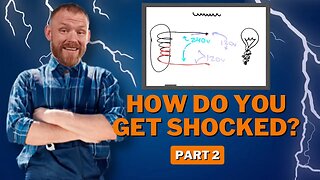 13:40
13:40
Electrician U
1 year agoHow Do You Get Shocked Part2
133 -
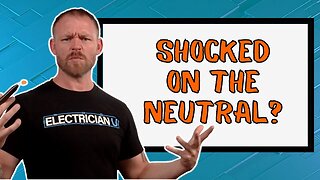 7:35
7:35
Electrician U
1 year agoCan You Get Shocked From a Neutral Conductor?
249 -
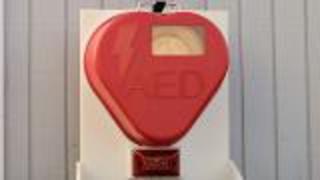 2:28
2:28
Monkeysee
7 years agoWhat You Need To Know About Electric Shock Drowning
301 -
 2:03
2:03
NowYouKnowEnglish
4 years agoWhat Is Static Electricity? *
13 -
 2:03
2:03
NowYouKnowEnglish
4 years agoWhat Is Static Electricity?
1.84K -
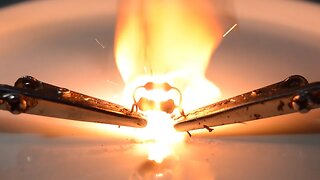 5:57
5:57
GarageScience
1 year agoHow to Start Electrical Fires ~ Burning/Blowing Up Resistors With Science!!!
12 -
 0:22
0:22
TheCONTENTbible
8 years agoThis 'Touching The Electric Fence' Experiment Went Just As Expected
810K4 -
 7:41
7:41
Physics Girl Archive Channel
1 year agoDIY Lightning Experiment! Make a SHOCKING Capacitor
15 -
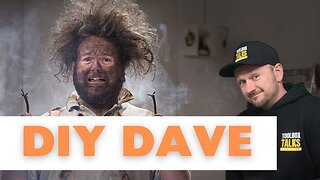 17:19
17:19
Tool Box Talk For Electricians
4 months agoDo It Yourself Electrician - Apparently It's Easy 💥
38 -
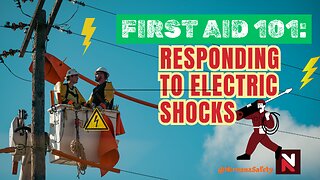 1:29
1:29
NirvanaSafety
3 months agoFirst Aid 101: Responding to Electric Shocks #firstaid #electric #shock
3